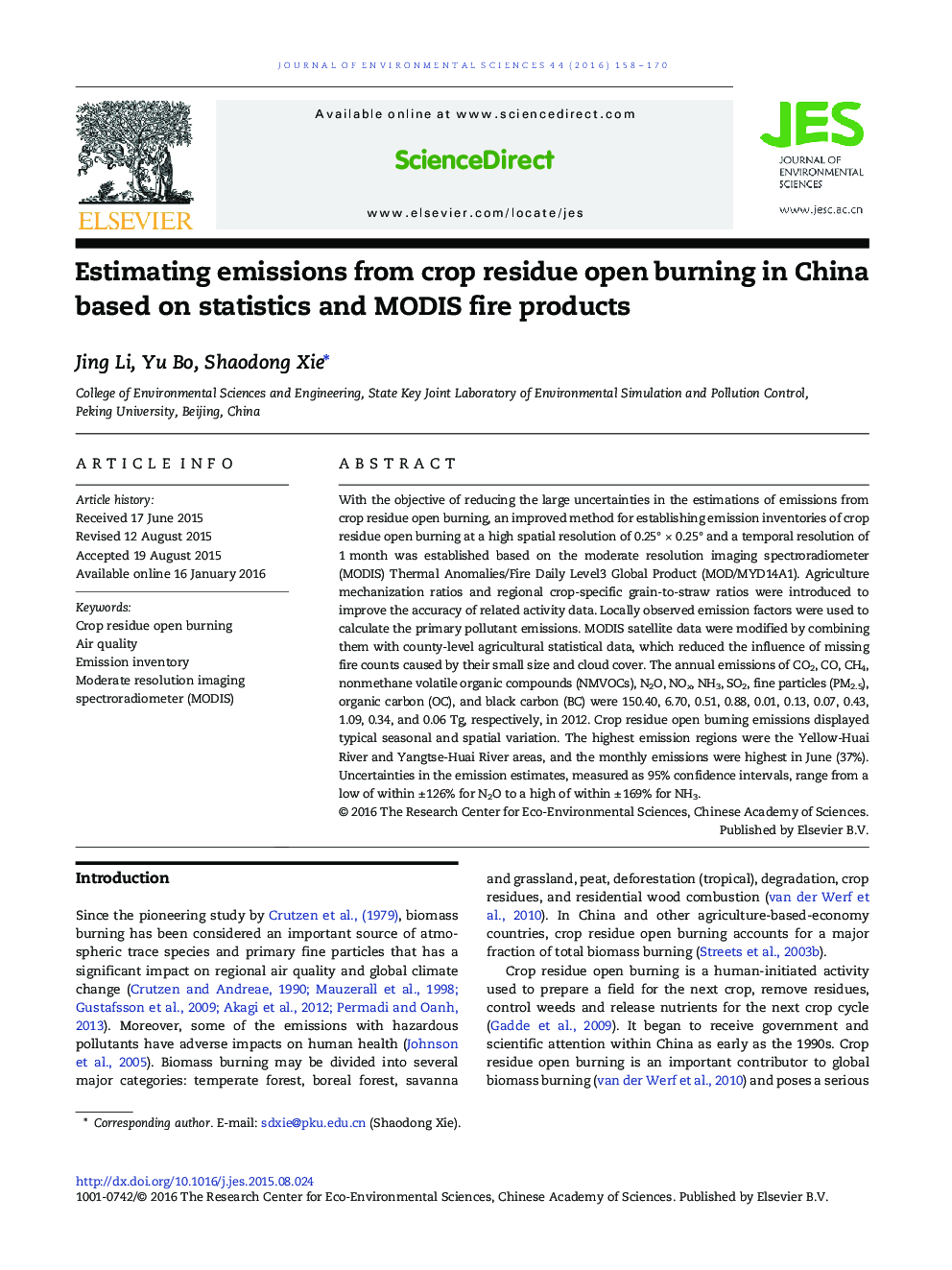| Article ID | Journal | Published Year | Pages | File Type |
|---|---|---|---|---|
| 4453767 | Journal of Environmental Sciences | 2016 | 13 Pages |
With the objective of reducing the large uncertainties in the estimations of emissions from crop residue open burning, an improved method for establishing emission inventories of crop residue open burning at a high spatial resolution of 0.25° × 0.25° and a temporal resolution of 1 month was established based on the moderate resolution imaging spectroradiometer (MODIS) Thermal Anomalies/Fire Daily Level3 Global Product (MOD/MYD14A1). Agriculture mechanization ratios and regional crop-specific grain-to-straw ratios were introduced to improve the accuracy of related activity data. Locally observed emission factors were used to calculate the primary pollutant emissions. MODIS satellite data were modified by combining them with county-level agricultural statistical data, which reduced the influence of missing fire counts caused by their small size and cloud cover. The annual emissions of CO2, CO, CH4, nonmethane volatile organic compounds (NMVOCs), N2O, NOx, NH3, SO2, fine particles (PM2.5), organic carbon (OC), and black carbon (BC) were 150.40, 6.70, 0.51, 0.88, 0.01, 0.13, 0.07, 0.43, 1.09, 0.34, and 0.06 Tg, respectively, in 2012. Crop residue open burning emissions displayed typical seasonal and spatial variation. The highest emission regions were the Yellow-Huai River and Yangtse-Huai River areas, and the monthly emissions were highest in June (37%). Uncertainties in the emission estimates, measured as 95% confidence intervals, range from a low of within ± 126% for N2O to a high of within ± 169% for NH3.
Graphical abstractFigure optionsDownload full-size imageDownload as PowerPoint slide
